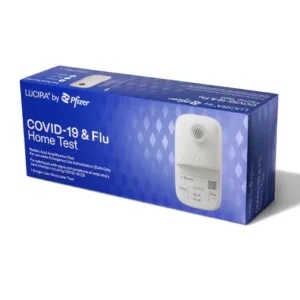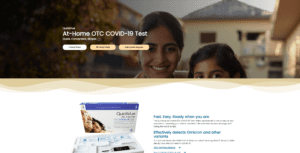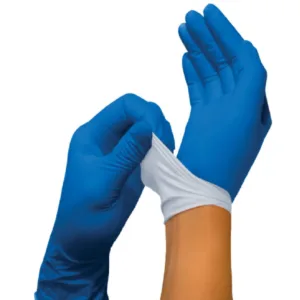
Despite major public health efforts to curb the COVID-19 pandemic, the recent appearance of the highly transmissible, widely drug-resistant, and profoundly immune system-evading XBB.1.5 SARS-CoV-2 subvariant is causing concern throughout the world.
The naming convention of SARS-CoV-2 lineages with a “X” prefix are those that resulted from genetic recombination between two or more subvariants.
There are two omicron subvariants, BA.2.10.1 and BA.2.75, that have naturally co-infected a human host to produce the XBB lineage. Officials in charge of public health in India made the initial discovery of the new variant, in the summer of 2022. A more precise terminology, you might think of XBB.1.5 as the “fifth grandchild” of the original XBB subvariant.

COVID-19 XBB.1.5 is descended from a distinct genetic line.
Since the first omicron wave began in November 2021, various worrying omicron subvariants have arisen on the worldwide pandemic scene, now XBB.1.5 being one of them. As a merger of two omicron subvariant lineages, XBB.1.5 differs from other offspring of the initial omicron variant (known as B.1.1.529).
XBB.1.5 is perhaps the most genetically diverse and transmissible omicron subvariant of SARS-CoV-2 to date.
The World Health Organization reports that XBB.1.5 has spread to at least 38 different nations, but that it is most common in the United States, where it is responsible for around 43% of all COVID-19 cases. The percentage of XBB.1.5-related cases varies widely across the United States, from 7% in the Midwest to over 70% in New England.
Australia, Canada, the European Union, Japan, Kuwait, Russia, Singapore, South Africa, and the United Kingdom have all confirmed the existence of XBB.1.5. Surveillance data collected in real time shows that XBB.1.5 is quickly expanding around the globe and is poised to replace the current most common subvariant.
The bacterium XBB.1.5 has been found in municipal wastewater systems in the United States, Europe, and beyond.
There is little datadata on XBB.1.5’s ability to induce severe sickness. According to the World Health Organization, XBB.1.5 has no mutations that render it more hazardous than its original subvariants.
In contrast to earlier omicron subvariants of concern, XBB.1.5 is believed to be equally capable of producing significant sickness in old and immunocompromised individuals.
The omicron subvariants with the best ability to evade the immune system are XBB.1.5 and XBB.1. One of the most debated aspects of XBB.1.5 is the level of protection provided by the presently available mRNA vaccines, including the most recent bivalent booster formulations. This is valid for both adults and children.
In addition, some specialists consider that the prescription of bivalent boosters for the prevention of COVID-19 disease in young persons who are otherwise healthy is neither medically justifiable nor cost-effective.
Researchers from Columbia University in New York discovered that levels of neutralizing antibodies against XBB.1.5 were up to 155-fold lower after bivalent boosting than levels against the wild-type virus after monovalent boosting.
This indicates that neither monovalent nor bivalent booster vaccinations give sufficient protection against XBB. 1.5.
The best ways to keep yourself and others safe is regularly test with both Covid Antigen Test such as the 2 pack from Abbott Laboratories, BinaxNow. Or the at home Molecular test by Lucira Health.
SARS-fast CoV-2’s development has made it difficult to effectively treat COVID-19 using the current arsenal of preventative and treatment measures. It has aldso been determined that none of the existing monoclonal antibodies directed against the spike protein of SARS-CoV-2 are effective against XBB. 1.5.
When treating infected patients, antiviral drugs such remdesivir and Paxlovid may be recommended in those who have a high risk of developing severe illness.
In this video, find out why the cost of the vaccination against COVID has increased.
To protect yourself and your community from XBB.1.5 and other subvariants of concern, it is critical to use normal infection control measures, such as wearing a face mask inside, keeping social distance, and often washing your hands.
To what extent bivalent boosters can protect against COVID-19 sickness caused by XBB.1.5 is unknown, although they may be worth considering for the elderly, immunocompromised, and other risk-averse persons.
The XBB.1.5 version has been given the moniker “Kraken” because of its terrifying reputation.
Some researchers have given XBB.1.5 and other worrying SARS-CoV-2 subvariants unofficial aliases they say are simpler to recall than the lengthy numeric names.
Social media and news outlets have popularized the term “Kraken” for XBB.1.5, while “Gryphon” and “Hippogryph” have been used to refer to the ancestry of XBB and XBB.1, respectively. The Kraken is a huge squid or sea monster from Norse mythology; the Gryphon is a fabled bird with characteristics of both an eagle and a lion; and the Hippogryph is a mythical beast with characteristics of both the Gryphon and a horse.
Disclaimer: Peach Medical strongly recommends discussing any testing plans or protocols with a certified physician or healthcare professional before making any decisions. The information provided by Peach Medical is intended to be general in nature and is not a substitute for professional medical advice, diagnosis, or treatment.







PeachMedical Corp